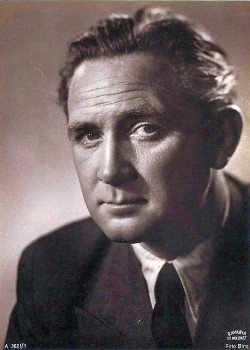Related Research Articles

Grethe Weiser was a German actress.

Hubert "Hubsi" von Meyerinck was a German film actor. He appeared in more than 280 films between 1921 and 1970.

Gustav Knuth was a German film actor. He appeared in more than 120 films between 1935 and 1982 and starred in the TV series Alle meine Tiere. He was married to the actress Elisabeth Lennartz.
Franz Grothe was a German composer, mainly for the cinema. His musicals were outstanding successes. He was required to be a member of the Nazi party.
Oskar Schnirch (1902–1995) was an Austrian cinematographer. He worked on over eighty films during the Weimar, Nazi and West German eras.
Helmut Weiss was a German actor, screenwriter, and film director. He was notable for directing Tell the Truth the first film produced in what was to become the future West Germany after the Second World War. It was made in Hamburg in the British Zone of Occupation. Much of the film had already been made at the UFA studios in Berlin shortly before the arrival of the Red Army, but Weiss dramatically re-shot it. The film was significant in its use of outdoor locations in common with other post-war rubble films.
Gertrud Hinz was a German film editor. She was married to the cinematographer Theo Nischwitz and was sometimes credited as Gertrud Hinz-Nischwitz. She edited more than sixty films and television series during her career. In the Nazi era she edited the anti-British adventure film Uproar in Damascus (1939) and the war film Bloodbrotherhood (1941).
Johanna Meisel was a German film editor. She edited fifty six films between 1940 and 1962.
Else Reval was a German film actress.
Willi Herrmann (1893–1968) was a German art director.
Ekkehard Kyrath was a German cinematographer.
Gero Wecker (1923–1974) was a German film producer. In the post-Second World War era he produced populist entertainment films for the West German market.
Karl Weber (1897-1965) was a German art director. He frequently worked alongside Erich Zander designing film sets.
Bruno Stephan was a German cinematographer.
Heinrich Jonen (1901–1960) was a German film producer. Jonen controlled his own company Meteor Film, but did much of his work for large studios. During the Nazi era he headed production at Tobis Film and Berlin Film. In the late 1950s he was placed in charge of production at the re-founded UFA company.
Walter von Bonhorst (1904–1978) was a German film editor. During the Nazi era he was employed at Tobis Film and UFA.
Franz Bi was a German art director. He worked on the set design of more than forty films during his career, often in collaboration with Bruno Monden.
Egon Vogel (1908–1993) was a German stage, television and film actor. A character actor he amassed over a hundred credits during his career, some of them in minor parts.
Kurt Hasse (1916–1999) was a German cinematographer. Having started out as an assistant cameraman during the Nazi era, he was mainly active in postwar West German cinema and later in television.
Fritz Lück (1880-1967) was a German painter and art director who designed the film sets on a number of productions from the silent era through to the post-Second World War period. He also worked in theatrical set design, particularly during the 1920s and 1930s. He worked on Nazi propaganda films such as Carl Peters and Titanic. Later he was employed on émigré Fritz Kortner's 1949 film The Last Illusion.